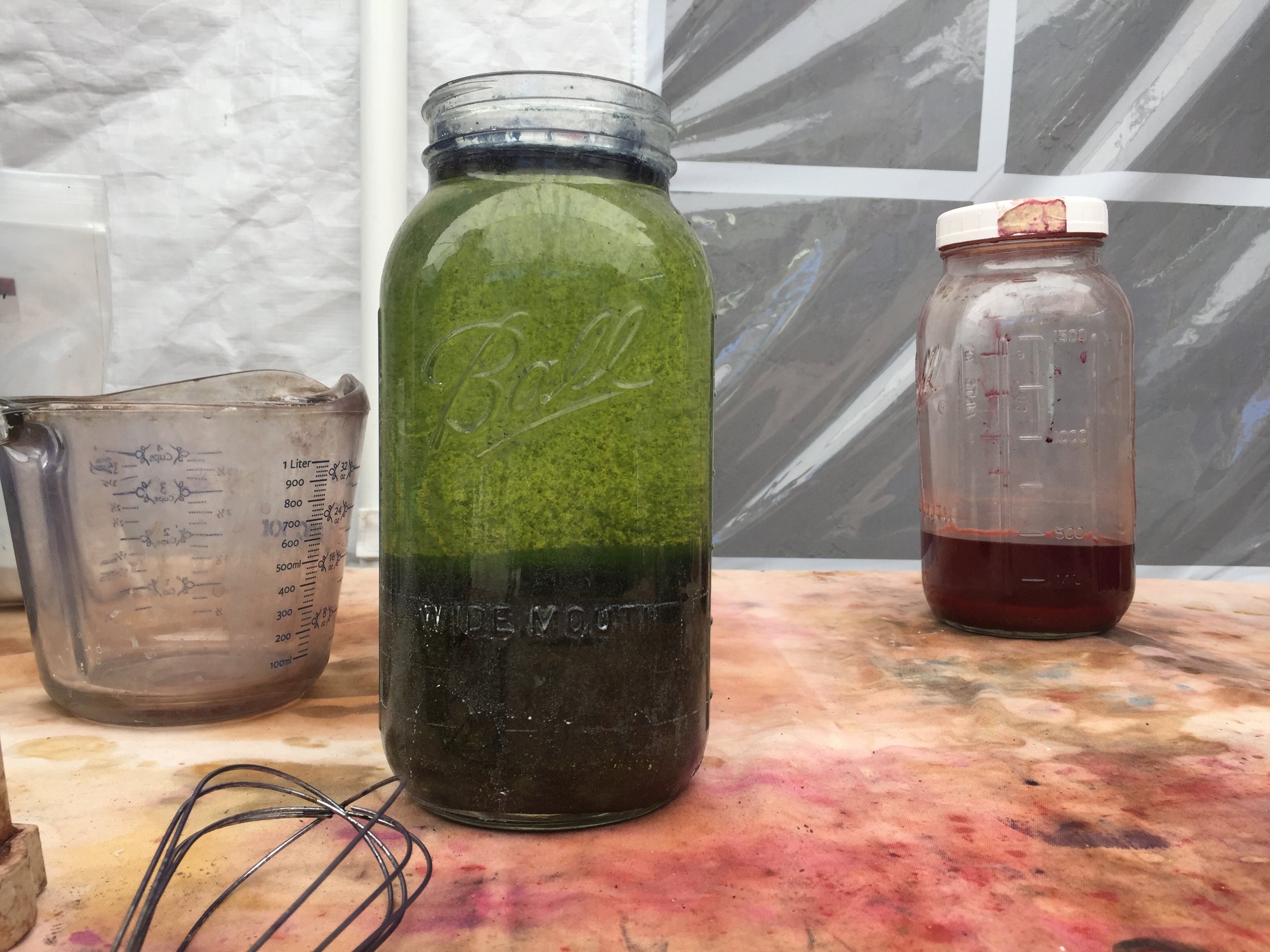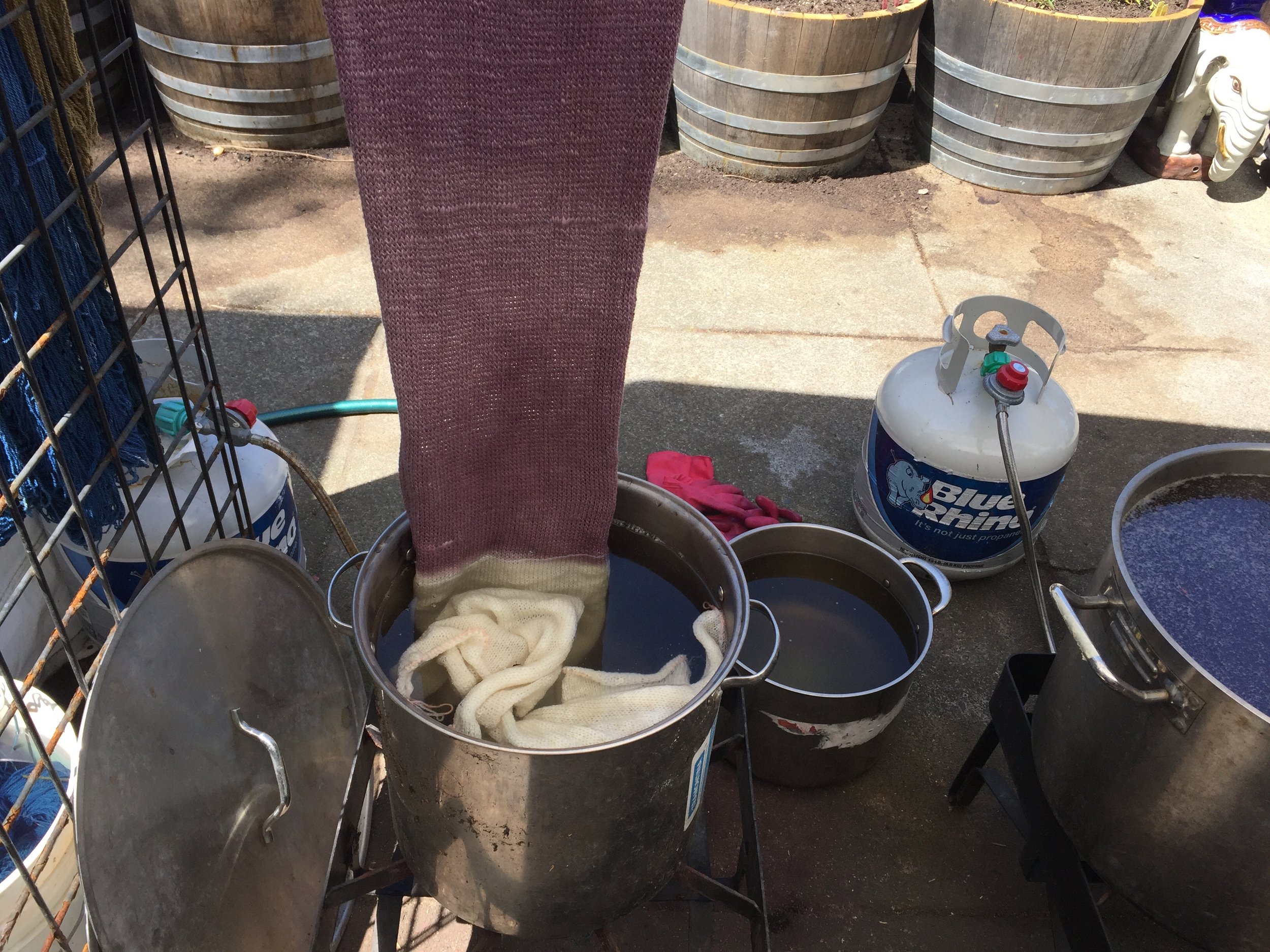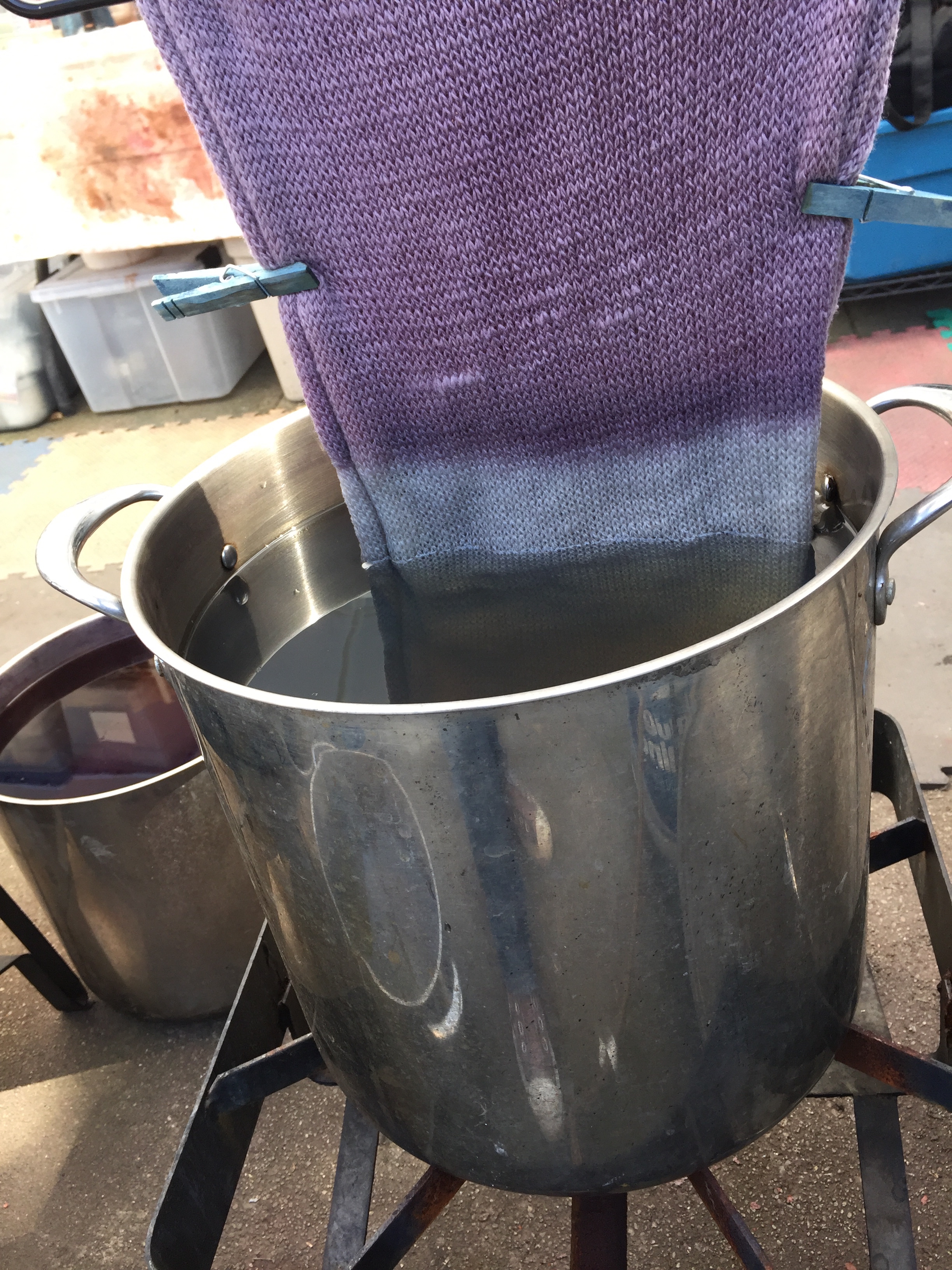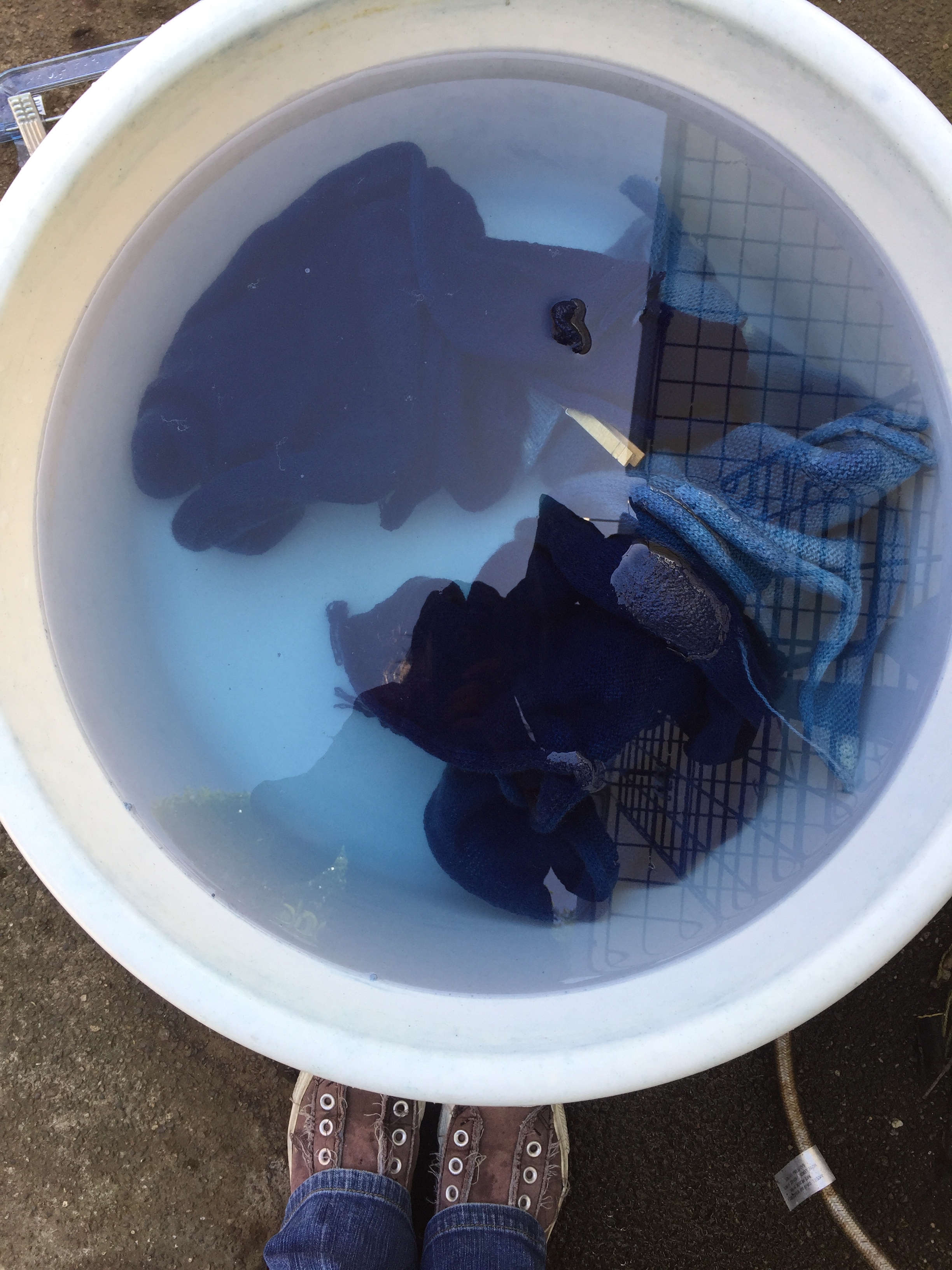From Dye Workshop to Shawl
Check out this shawl I just finished. Isn't it pretty? Aren't the colors great? The pattern is Hiraeth (with a couple of modifications because I wanted to use as much of my 1000 yards of fingering-weight yarn as possible). And the yarn? Well, I DYED IT MYSELF! Maybe not all by myself, exactly. I also had lots of guidance, thanks to a workshop hosted by Sincere Sheep and Kira K. Designs at Sincere Sheep's studio in Napa.
The workshop was super fun and incredibly instructive. To be clear, I am all for DIY experimentation when it comes to art or craft. But with natural dyes and nice yarn? I want to feel like I might actually get a result I want. Left to my own devices, the threat of disappointment looms large. I love to learn from Brooke (of Sincere Sheep). Her dyeing set-up is terrific, her knowledge of natural dyeing is astonishingly deep, and she infuses her spirit of generosity into every aspect of her teaching. I chose this particular workshop because gradient yarns have always confounded me. I didn't know how they were made, and I didn't know how best to knit with them. Now I know those things, and more.
Here are some photos from the workshop, Natural Dyeing Gradient Yarns.
We started the day by looking at all our color choices, and then we sketched how we thought we wanted our colors to go, from one end of the knitted blank to the other. For gradient yarns, which are yarns whose colors change over the length of the yarn, you can get that drifting color effect by starting with a "blank." A blank is yarn that has been knitted (usually by machine) into a long rectangle. You then dye the rectangle of yarn (which has also been mordanted, so the dye will stick), and when dyeing is complete and the blank is dry, you unravel the blank into a ball from which you can knit. Brooke guided us as to which dyes to use and in which order to achieve our desired effects. I chose to do gradients of green, from light to dark, on one blank (I used fustic and indigo). On the other, I went with greys and purples (I used fustic, logwood, tannin, and iron--I think. I can't find my notes!)
I thought these two skeins would look pretty marvelous together, but I didn't have an exact project in mind.
Once home, I let the thoroughly rinsed yarn dry, and I gleefully unraveled (ripping with abandon!) the blanks and wound them into cakes.
I then began searching for a pattern that I thought would work. I looked for fingering-weight yarn patterns that would use about 1000 yards of yarn. Eventually, I chose Hiraeth, and I modified the pattern as I went along to use more of the green skein and then to not run out of the purple one. I had to rip out some rows after realizing I had miscalculated, but it wasn't that bad.
I finished this project in record time. It is my first shawl. For all the knitting I have done, I have steered clear of shawls mostly because I have no idea how to wear them so that they look good and I don't feel silly. But enough insecurity!
I think I now understand why so many knitters are shawl-obsessed. Shawls like this one can be really beautiful and easy and meditative to knit. They can also feel interminable, but that's not really something special about shawls. Also, the things that can drive you to distraction when knitting a sweater or a hat, like gauge, size and fit, are not really important in a shawl. As long as you're pretty close to the gauge the pattern requires, you'll have enough yarn and your shawl will drape and fit just fine. Low stress knitting at its finest.
I love a project like this one that teaches me things. In addition to learning to appreciate shawls, I now also know how gradient skeins are made and how to knit something lovely with them.










